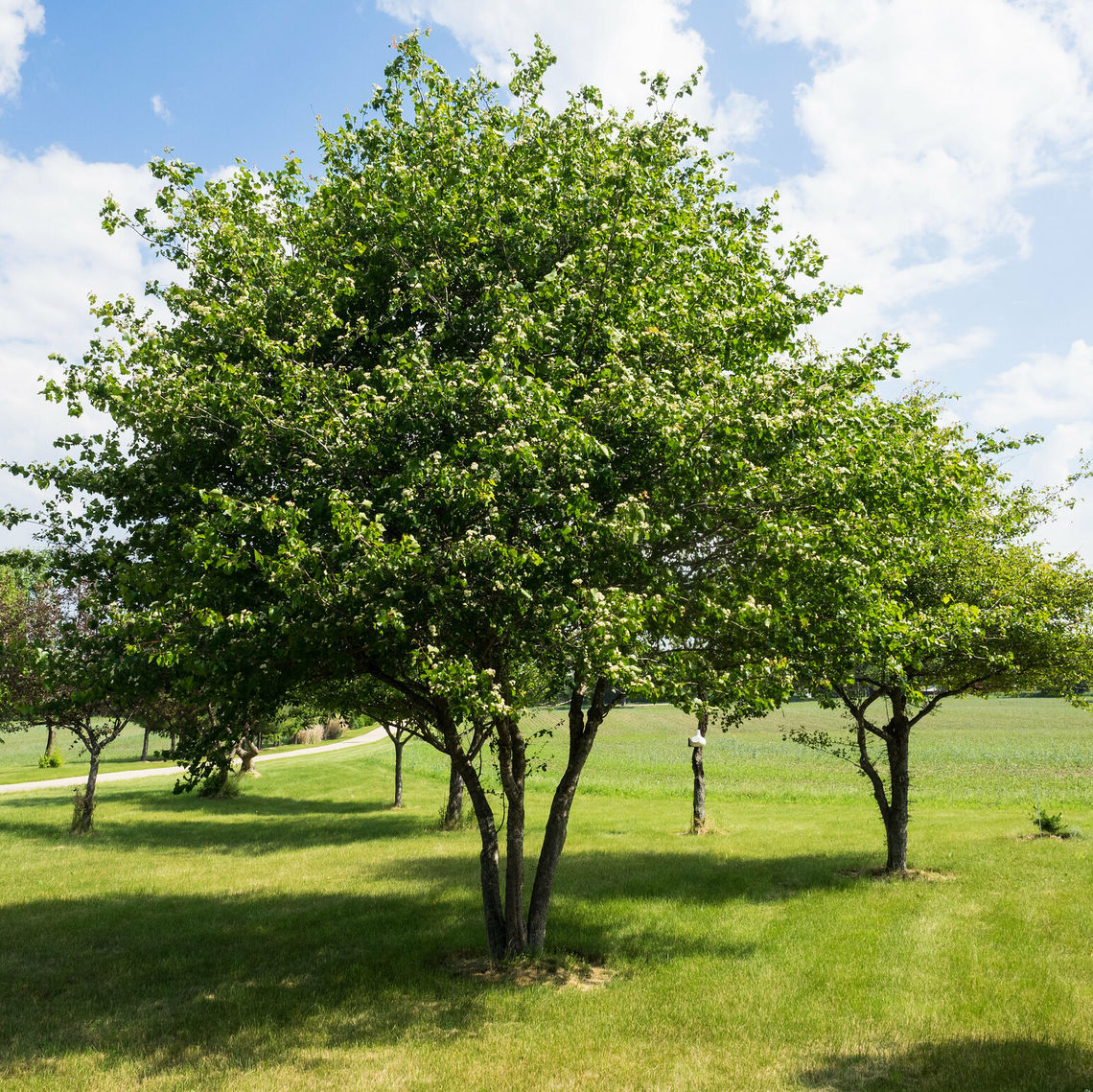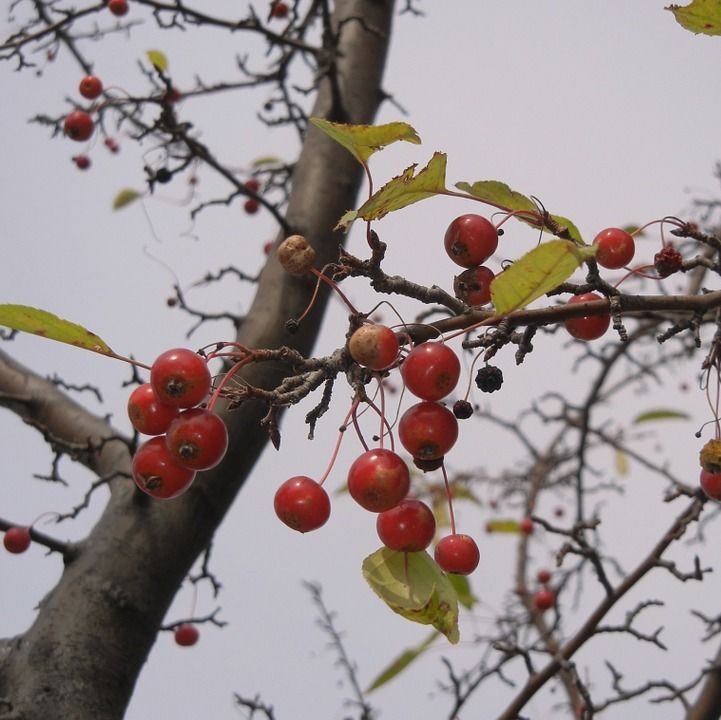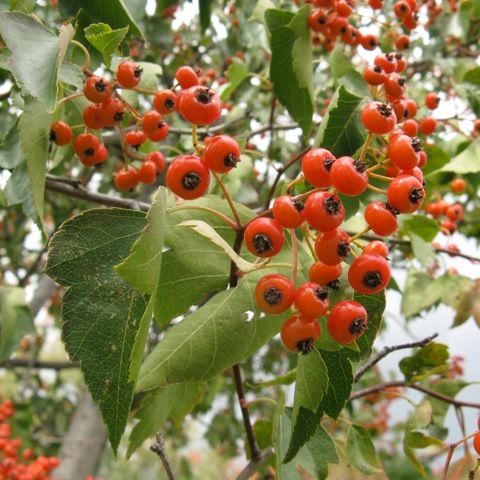Washington Hawthorn (Crataegus phaenopyrum)
The Washington hawthorn displays fragrant white flowers that cover the tree in the summer and small, bright-red berries that persist throughout the winter. This tree also has a variety of fall colors, showing off shades of orange, red, and purple. Its leaves have 3-5 lobes and have prominent pointed ends. This tree attracts birds and butterflies.
Family: Rosaceae (Rose)
Characteristics: The 1-inch to 3-inch-long leaves are toothed, glossy, dark green, and have 3 to 5 lobes with prominent pointed ends. In the fall, leaves turn orange, scarlet, and purple. In May, creamy white, 5-petaled flowers cover the tree. These flowers give way to small, bright-red, glossy berries that appear in September to October. These berries remain present for the entirety of winter. The tree is densely thorny, covered in 1-inch to 3-inch-long spines. Bark is rough and becomes slightly shaggy with age. This tree has a broadly oval to rounded shape and is low-branching. It grows 25-30 feet high and 20-25 feet wide.
Foliage: Deciduous (leaves lost seasonally)
Geographic Origin: Southeastern United States (native)
Cultivation Notes: Requires medium maintenance. Does best in full sun, though can tolerate light shade. Prefers moist and well-drained soils. This tree is prone to cedar rust disease. It should also be planted with care, due to its long and sharp thorns.
Sources: Dirr, Morton Arboretum, Missouri Botanical Garden



